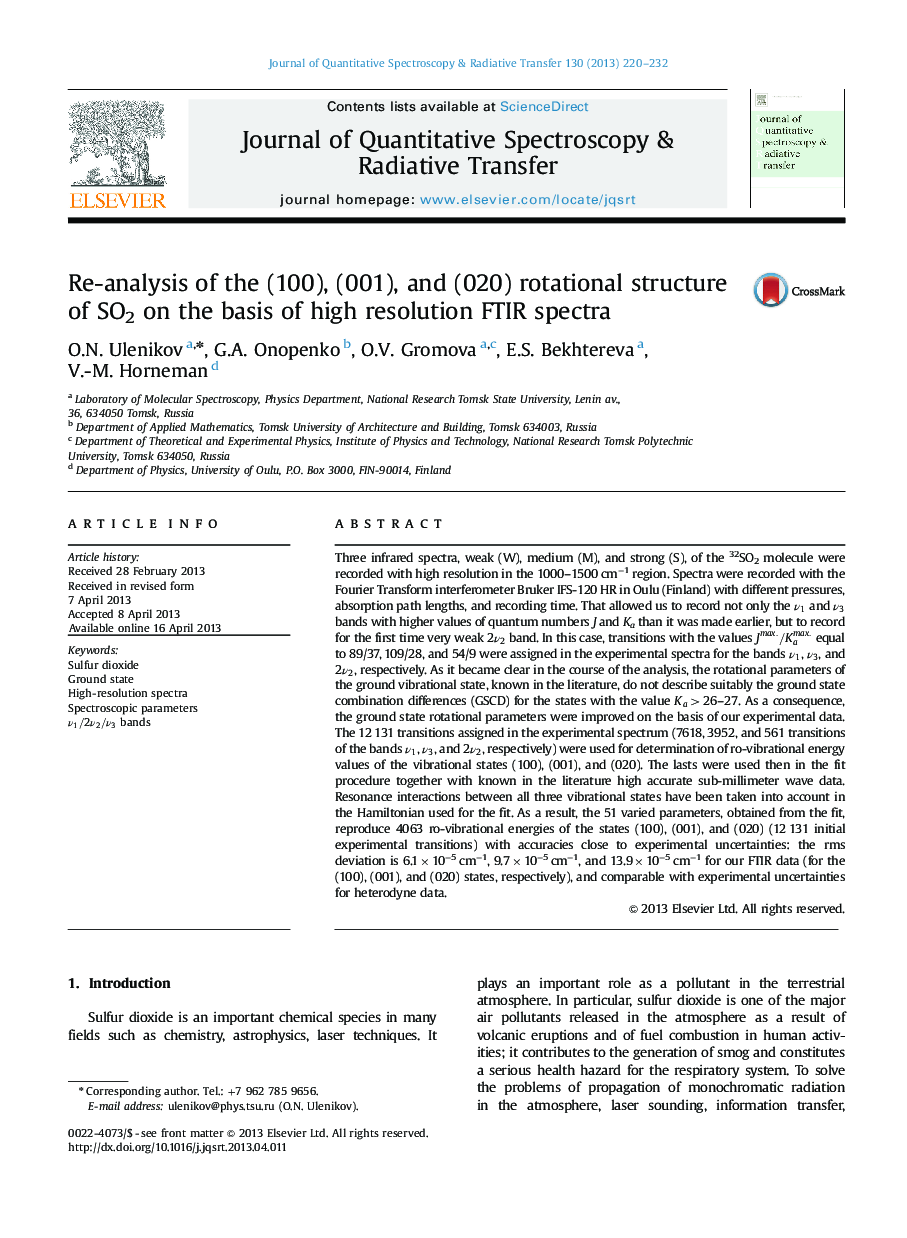| Article ID | Journal | Published Year | Pages | File Type |
|---|---|---|---|---|
| 5428628 | Journal of Quantitative Spectroscopy and Radiative Transfer | 2013 | 13 Pages |
â¢Improvement of the ground state rotational parameters of SO2.â¢The first high resolution analysis of the 2ν2 band of SO2.â¢Increasing more than two times information about the ν1 and ν3 bands than was known before.â¢Improvement of the ν1/2ν2/ν3 spectroscopic parameters.
Three infrared spectra, weak (W), medium (M), and strong (S), of the 32SO2 molecule were recorded with high resolution in the 1000-1500 cmâ1 region. Spectra were recorded with the Fourier Transform interferometer Bruker IFS-120 HR in Oulu (Finland) with different pressures, absorption path lengths, and recording time. That allowed us to record not only the ν1 and ν3 bands with higher values of quantum numbers J and Ka than it was made earlier, but to record for the first time very weak 2ν2 band. In this case, transitions with the values Jmax./Kamax. equal to 89/37, 109/28, and 54/9 were assigned in the experimental spectra for the bands ν1, ν3, and 2ν2, respectively. As it became clear in the course of the analysis, the rotational parameters of the ground vibrational state, known in the literature, do not describe suitably the ground state combination differences (GSCD) for the states with the value Ka>26-27. As a consequence, the ground state rotational parameters were improved on the basis of our experimental data. The 12 131 transitions assigned in the experimental spectrum (7618, 3952, and 561 transitions of the bands ν1, ν3, and 2ν2, respectively) were used for determination of ro-vibrational energy values of the vibrational states (100), (001), and (020). The lasts were used then in the fit procedure together with known in the literature high accurate sub-millimeter wave data. Resonance interactions between all three vibrational states have been taken into account in the Hamiltonian used for the fit. As a result, the 51 varied parameters, obtained from the fit, reproduce 4063 ro-vibrational energies of the states (100), (001), and (020) (12 131 initial experimental transitions) with accuracies close to experimental uncertainties: the rms deviation is 6.1Ã10â5 cmâ1, 9.7Ã10â5 cmâ1, and 13.9Ã10â5 cmâ1 for our FTIR data (for the (100), (001), and (020) states, respectively), and comparable with experimental uncertainties for heterodyne data.
